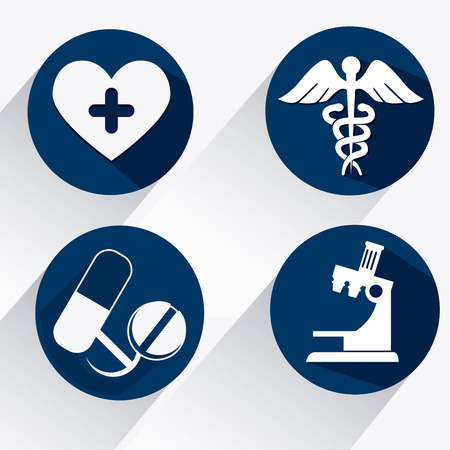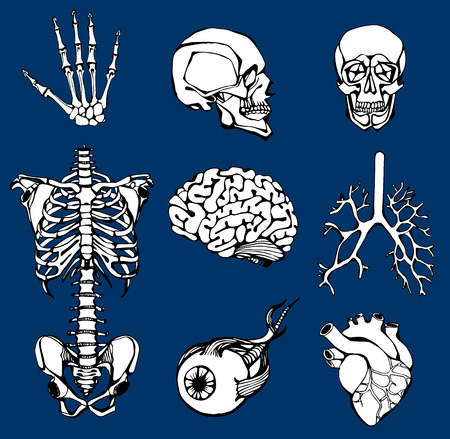1. Understanding the U.S. Healthcare System
The American healthcare system can feel overwhelming, especially after experiencing a spinal cord injury. Knowing how it works and understanding key terms can help you find the right resources, insurance coverage, and support for your recovery journey.
How the U.S. Healthcare System Operates
Unlike many countries with government-run healthcare, the United States has a complex mix of private and public insurance options. Medical care is provided by private hospitals, clinics, and doctors offices, but payment comes from a variety of sources: government programs (like Medicare and Medicaid), private insurance companies, or out-of-pocket payments by patients themselves.
Key Healthcare Players in the U.S.
| Provider/Program | Who It Serves | What It Covers |
|---|---|---|
| Private Insurance | Anyone (usually through employers) | Hospital stays, rehab, outpatient care, medications (coverage varies) |
| Medicare | People age 65+ or with certain disabilities | Inpatient/outpatient care, some rehab services, limited medication coverage |
| Medicaid | Low-income individuals/families (eligibility varies by state) | Hospital stays, rehab, long-term care, medications (coverage varies by state) |
| VA Healthcare | Veterans who meet eligibility requirements | Comprehensive care including rehab and assistive devices |
Essential Terminology to Know
- Premium: The amount you pay each month for insurance coverage.
- Deductible: The amount you must pay out-of-pocket before your insurance starts covering costs.
- Copay: A fixed fee you pay for specific services (like a doctor visit).
- Out-of-Pocket Maximum: The most youll have to pay during a policy period before your insurance covers 100% of costs.
- Network: The group of doctors, hospitals, and providers your plan contracts with for lower rates.
What Makes the U.S. System Unique?
The American healthcare system is unique because it offers a wide variety of choices but often requires more personal management—such as choosing between plans, understanding benefits, and dealing with insurance paperwork. There’s no universal health coverage; your access depends on your job, income level, age, veteran status, or disability.
Navigating Care After Spinal Cord Injury
If you’ve had a spinal cord injury in the U.S., you’ll likely work with multiple types of providers—rehabilitation specialists, physical therapists, social workers—and may need to coordinate between different insurance programs. Learning these basics will help you make informed decisions as you move forward with your recovery process.
2. Navigating Health Insurance After Spinal Cord Injury
Understanding Your Insurance Options
After a spinal cord injury, understanding your health insurance options is crucial for getting the care you need in the United States. There are both public and private insurance programs that can help cover medical costs, rehabilitation, and ongoing support. Heres a quick overview:
| Insurance Type | Who Qualifies? | Main Benefits | Things to Watch Out For |
|---|---|---|---|
| Medicare | People 65+, or under 65 with certain disabilities (including some with spinal cord injuries) | Covers hospital stays, doctor visits, rehab, durable medical equipment | May have limits on rehab days; may require co-pays or supplemental coverage |
| Medicaid | Low-income individuals and families (eligibility varies by state) | Covers wide range of services, including long-term care and home health | Coverage and benefits can differ greatly depending on your state |
| Private Insurance (Employer-based or Marketplace) | Individuals/families who purchase their own plans or get coverage through work | Choice of providers, potentially broader networks, some rehab coverage | High deductibles/out-of-pocket costs; check for rehab limits and exclusions |
| Veterans Affairs (VA) Health Care | U.S. military veterans with service-related injuries/disabilities | Comprehensive rehab and long-term support for eligible veterans | Must be enrolled in VA system; benefits tied to disability rating/status |
Key Eligibility Factors to Consider
- Income Level: Determines Medicaid eligibility in most states.
- Disability Status: Qualifying as disabled can open doors to Medicare or Social Security Disability Insurance (SSDI).
- Age: Individuals over 65 automatically qualify for Medicare.
- Military Service: Veterans may access special programs through the VA.
- State Residency: Some benefits, especially Medicaid, vary by state.
Tips for Applying for Health Insurance after Spinal Cord Injury
- Start Early: Begin your application process as soon as possible after injury—some programs have waiting periods.
- Get Help from Social Workers or Case Managers: Many hospitals have staff who specialize in helping patients apply for benefits.
- Gather Documentation: You will likely need medical records, proof of income, identification, and residency documents.
- If Denied, Appeal: Don’t give up if you’re denied at first—appeals are common and often successful with more documentation.
- Check Open Enrollment Dates: Private insurance plans typically have annual enrollment periods—mark your calendar so you don’t miss them.
Navigating Coverage for Rehab and Ongoing Care
- Know What’s Covered: Ask specifically about physical therapy, occupational therapy, speech therapy, counseling, home health aides, and durable medical equipment (like wheelchairs).
- Watch Out for Limits: Many plans limit the number of therapy sessions per year—find out what those limits are up front.
- Priors & Pre-Authorization: Some insurers require approval before starting certain treatments; always double-check with your provider and insurance company first.
- DME Coverage: Durable Medical Equipment (DME) like wheelchairs may only be covered once every few years—ask about replacement policies and repairs.
- Keen Eye on Out-of-Pocket Costs: Deductibles, co-pays, and coinsurance add up quickly. Ask about maximum yearly out-of-pocket limits to plan ahead.
Your Support System Matters!
Navigating insurance after a spinal cord injury can feel overwhelming. Don’t hesitate to ask questions—social workers, case managers, and advocacy groups can be powerful allies as you move forward with your recovery journey.

3. Accessing Rehabilitation and Specialized Medical Services
Finding the Right Rehabilitation Centers for Spinal Cord Injury
After a spinal cord injury, getting the right rehabilitation is crucial for recovery and quality of life. In the United States, there are specialized rehab centers that focus on spinal cord injuries (SCI). Here’s how you can find and access top facilities:
How to Find Top SCI Rehabilitation Centers
- Ask Your Healthcare Provider: Your hospital doctor or primary care physician can refer you to specialized SCI centers.
- Use Online Resources: Websites like the SCI Information Pages and Model Systems Knowledge Translation Center list accredited rehab centers across the U.S.
- Contact Insurance Company: Call your insurance provider for a list of in-network rehabilitation centers and specialists.
- Check Accreditation: Look for centers accredited by CARF (Commission on Accreditation of Rehabilitation Facilities) or JCAHO (The Joint Commission).
Top-Rated SCI Rehab Centers in the U.S.
| Center Name | Location | Website |
|---|---|---|
| Sheltering Arms Institute | Richmond, VA | shelteringarmsinstitute.com |
| Kessler Institute for Rehabilitation | West Orange, NJ | kessler-rehab.com |
| TIRR Memorial Hermann | Houston, TX | tirr.memorialhermann.org |
| Craig Hospital | Englewood, CO | craighospital.org |
| Spaulding Rehabilitation Hospital | Boston, MA | spauldingrehab.org |
The Referral Process: Steps to Take
- Get a Referral: Ask your current doctor or hospital social worker to write a referral to an SCI rehab center. Most insurance plans require this step.
- Submit Paperwork: The rehab center will need your medical records and insurance information before admission.
- Insurance Approval: The center’s admissions team will work with your insurance company to get prior authorization if needed.
- Schedule Admission: Once approved, set up an evaluation or admission date with the rehab facility.
- Plan Transportation: Arrange safe transport, especially if mobility is limited. Some centers offer transportation assistance.
Navigating Transportation Options for Rehabilitation Appointments
If you have mobility challenges after an SCI, transportation can be a hurdle. Here are common options available in the U.S.:
| Transportation Option | Description & How to Access |
|---|---|
| Medicaid Non-Emergency Medical Transport (NEMT) | If you qualify for Medicaid, NEMT covers rides to medical appointments. Contact your state’s Medicaid office for details. |
| Paratransit Services (ADA-Compliant) | Cities provide door-to-door services for people with disabilities under the Americans with Disabilities Act (ADA). Apply through your local transit authority. |
| Private Medical Transport Companies | You can book wheelchair-accessible vans; check with local providers or ask the rehab center for recommendations. |
| Loved Ones & Community Volunteers | Your family, friends, or volunteer groups may help with rides; some hospitals coordinate volunteer drivers. |
| PATIENT ASSISTANCE PROGRAMS* | *Some rehabilitation hospitals offer travel assistance funds—ask your social worker about available resources. |
Tips for Successful Access to Care and Rehab Services
- Keep all important documents—insurance cards, referrals, medical records—organized and ready to share.
- If English is not your first language, request interpreter services when scheduling appointments.
- If you’re unsure where to start, ask the hospital case manager or social worker—they are experts in navigating these processes.
- If denied by insurance, appeal with support from your healthcare team. Many appeals are successful!
- If you move states or cities, research transfer options early as waiting lists may apply at popular centers.
4. Community and Social Support Resources
Navigating life after a spinal cord injury (SCI) can feel overwhelming, but you don’t have to do it alone. Across the United States, there are many national and local organizations, support groups, peer mentoring programs, and online resources designed specifically for people with SCI. These resources offer emotional support, practical advice, social connections, and up-to-date information on living well after injury.
National Organizations Supporting SCI
| Organization | Description | Website |
|---|---|---|
| Christopher & Dana Reeve Foundation | Provides resources, peer mentoring, grants, and information for people living with paralysis. | christopherreeve.org |
| United Spinal Association | Offers advocacy, education, community programs, and local chapters across the U.S. | unitedspinal.org |
| Paralyzed Veterans of America (PVA) | Focuses on veterans with SCI but provides many general resources for all individuals with paralysis. | pva.org |
| Spinal Cord Injury Network International (SCINI) | A hub for information about SCI, including legal rights and resource directories. | spinalcordinjury.org |
Local Support Groups and Peer Mentoring Programs
Most major cities and many towns have in-person support groups where you can meet others who understand your journey. Hospitals with rehabilitation centers often host monthly gatherings or educational events. Local chapters of national organizations like United Spinal Association also offer opportunities to connect. Ask your rehab team or social worker about nearby options.
Peer Mentoring: One-on-One Guidance
Peer mentoring matches you with someone who has lived experience with SCI. They can help answer questions about daily life, navigating healthcare, returning to work or school, and adapting to new routines. The Christopher & Dana Reeve Foundation’s Peer & Family Support Program is a great place to start if you’d like to connect with a mentor.
Online Communities and Digital Resources
If travel or mobility is an issue, online communities provide 24/7 connection and support. Popular platforms include:
- Reeve Connect: A forum moderated by the Reeve Foundation for sharing experiences and asking questions.
- CareCure Forums: Offers discussion boards on topics ranging from medical care to adaptive sports.
- Facebook Groups: Search “spinal cord injury” or similar terms for private groups focused on different regions or interests.
- YouTube Channels: Many individuals with SCI share their day-to-day tips and stories through vlogs.
How These Resources Help You Thrive
The right community resource can make a big difference—whether it’s finding encouragement during tough times or learning practical tricks for everyday challenges. Connecting with others also helps reduce isolation and boosts confidence as you adjust to new circumstances. Don’t hesitate to reach out; there’s a whole network ready to support you every step of the way.
5. Legal Rights and Advocacy
Understanding Your Legal Protections
After a spinal cord injury, knowing your legal rights is essential for getting the care, services, and support you need. The United States has several laws that protect people with disabilities from discrimination and ensure equal access to healthcare, employment, and public spaces.
Key Disability Rights Laws
| Law | Main Purpose | How It Helps You |
|---|---|---|
| Americans with Disabilities Act (ADA) | Prevents discrimination based on disability in work, public places, transportation, and more. | Ensures ramps, accessible bathrooms, and reasonable accommodations at work or school. |
| Rehabilitation Act (Section 504) | Bans discrimination in any program receiving federal funding. | Covers hospitals, clinics, colleges that get federal money—ensuring accessibility. |
| Fair Housing Act | Makes it illegal to discriminate in housing due to disability. | You can request modifications for accessibility in your home. |
| Family and Medical Leave Act (FMLA) | Allows eligible employees to take unpaid leave for medical reasons. | You can take time off for rehabilitation without losing your job (if eligible). |
Workplace Accommodations: What You Can Ask For
If you are returning to work after a spinal cord injury, you have the right to ask your employer for reasonable accommodations under the ADA. These changes help you do your job effectively and safely.
Examples of Reasonable Accommodations:
- Accessible parking spaces close to the entrance
- Modified desks or workstations for wheelchair access
- Flexible work hours or remote work options
- Assistive technology or specialized equipment
- Allowing a service animal at work if needed
Advocating for Yourself in the Healthcare System
Navigating healthcare after a spinal cord injury can be challenging. Being your own advocate is important—this means speaking up about your needs and making sure you get appropriate care and respect.
Tips for Effective Self-Advocacy:
- Know Your Rights: Familiarize yourself with the ADA and other relevant laws.
- Keep Records: Document interactions with insurance companies, doctors, and case managers.
- Bring Support: Take a friend or family member to appointments if possible.
- Ask Questions: Don’t be afraid to clarify information or ask about alternatives.
- Get Help: Reach out to patient advocacy groups or legal aid organizations if you face barriers.


